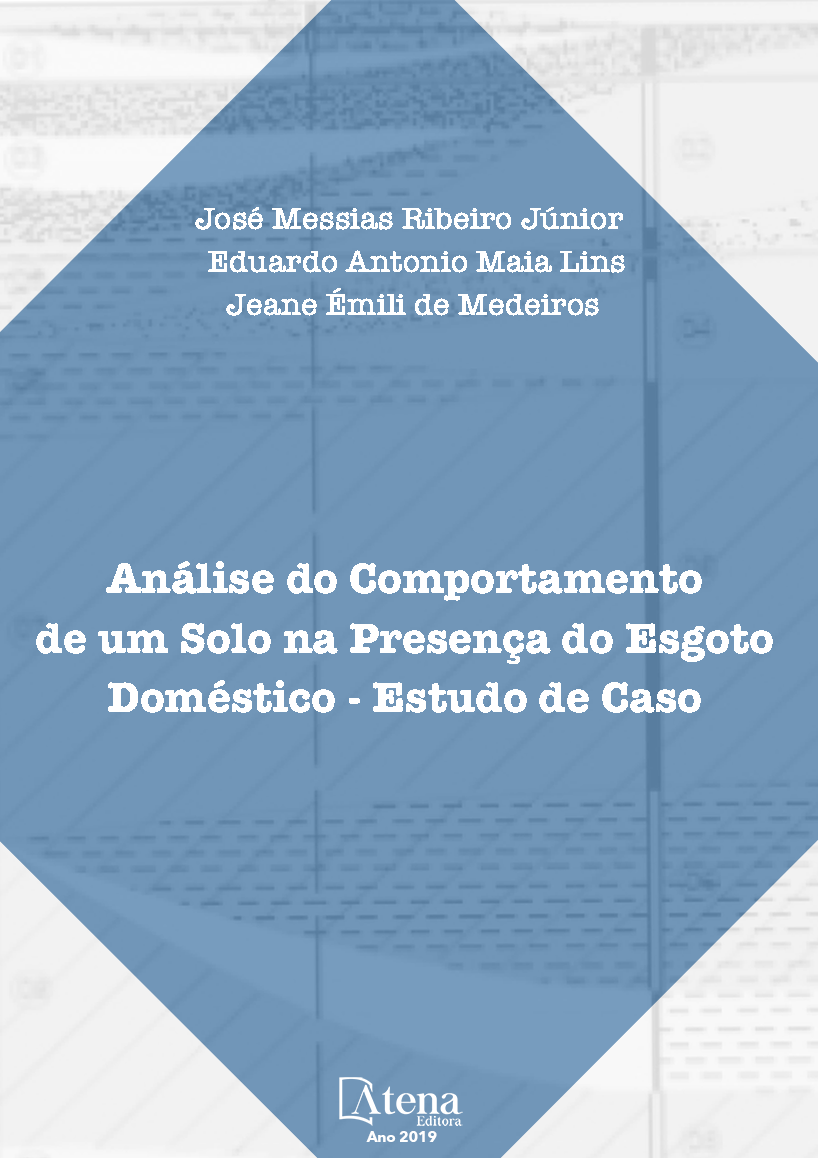
ANÁLISE DO COMPORTAMENTO DE UM SOLO NA PRESENÇA DO ESGOTO DOMÉSTICO - ESTUDO DE CASO
A fonte de contaminação oriunda do esgoto domésticos para o solo e consequetemente
para as águas subterrâneas é uma realidade atual. No Brasil, o sistema de tratamento
primário do esgoto através de tanque sépticos com filtro anaeróbio e vala de infiltração
atende uma grande parcela da população brasileira. Os Elementos químicos
(inorgânicos) como o Nitrato (NO3) e o Nitrito (NO2) presentes no esgoto domésticos são
umas das grandes fontes contaminantes para o meio ambiente atavés da infiltração no
solo. Baseado na Resolução nº 357, de 17 de março de 2005 do Conselho Nacional
do Meio Ambiente (CONAMA) se faz necessário atender aos parâmetros da normativa
para destinar as águas ao meio ambiente. Os estudos geotécnico na área da vala de
infiltração caracterizou o solo como areia-argila (SUCS) e com uma Permeabilidade na
ordem de 10-6 cm/s, ou seja, conforme literatura considerado impermeável. Os ensaios
a partir da amostra piloto físico-química do esgoto dectaram que as concentrações de
Nitrato e Nitrito estão acima da normativa do Conama. Com as sondagem a percussão
obteve-se o nível hidrostático do lençol freático com variação entre -3,00 metros a
-5 metros , tanto na estação chuvosa e na estação seca. A partir das informações
coletadas in loco e em laboratório, calculou-se a velocidade média linear pelo
transporte de advecção do contaminante e apurou-se que o maior alcance da pluma
contaminate é de 53,43 cm em 10 anos, ou seja, uma baixa velocidade de percolação
do contaminante para o solo. Como também, para o tratamento das concentrações
de Nitrato/ Nitrito estas são atenuadas pelo processo de desnitrificação e também pelo
próprio consumo dos vegetais pelo seu sistema radicular que consome o Nitrato do
Meio. Outra sugestão proposta no artigo é o pós-tratamento com barreiras reativas
de carvão ativado a fim de diminuir as concentrações de amônia (NH3) a qual no
meio porosos transforma-se em Nitrato, e consequentemente trazendo ainda mais
benefícios ao meio ambiente. A fim de realizar a estimativa de risco ambiental utilizouse a metodologia PEIR. O estudo demonstra que existe um risco ambiental mas a
tipologia do Solo, o nível hidrostático, a permeabilidade do solo, e a velocidade da
pluma contaminante faz com que o impacto ambiental seja mitigado.
ANÁLISE DO COMPORTAMENTO DE UM SOLO NA PRESENÇA DO ESGOTO DOMÉSTICO - ESTUDO DE CASO
-
DOI: 10.22533/at.ed.501102008
-
Palavras-chave: 1. Ciência do solo. 2. Esgoto. 3. Solos.
-
Keywords: Nitrates / Nitrites; permeability. environment and PEIR
-
Abstract:
The source of contamination from domestic sewage to the ground and consequently
to groundwater is a current reality. In Brail, the unitary treatment system of the sewage
through septic tank with anaerobic filter and infiltration ditch serves a large part of the
Brazilian population. Chemical (inorganic) elements such as Nitrate (NO3) and Nitrite
(NO2) present in domestic sewage are one of the major sources contaminated to the
environment by infiltration into the soil. Based on Resolution No. 357 of March 17, 2005
of the National Environmental Council (CONAMA), it is necessary to comply with the
parameters of the regulations to allocate water to the environment. The geotechnical
studies in the area of the infiltration trench characterized the soil as sand-clay (SUCS)
and with a Permeability in the order of 10-6 cm / s, ie, according to literature considered
impermeable. The tests from the physical-chemical pilot sample of the sewer found
that the concentrations of Nitrate and Nitrite are above Conama’s standard. With the
percussion drilling, the hydrostatic level of the water table was obtained, ranging from
-3.00 meters to -5 meters, both in the rainy season and in the dry season. From the
information collected locally and in the laboratory, the average linear velocity was
calculated by the transport of advection of the contaminant and it was determined that
the greatest range of the contaminated plume is 53.43 cm in 10 years, that is, a low
percolation rate to the soil. Also, for the treatment of Nitrate / Nitrite concentrations these
are attenuated by the denitrification process and also by the own consumption of the
plants by their root system that consumes the Nitrate of the Medium. Another suggestion
proposed in the article is the post-treatment with activated carbon reactive barriers in
order to reduce the concentrations of ammonia (NH3) which in the porous medium
becomes Nitrate, and consequently bringing even more benefits to the environment.
In order to carry out the environmental risk estimation, the PEIR methodology was
used. The study demonstrates that there is an environmental risk but the soil typology,
hydrostatic level, soil permeability, and the speed of the contaminating plume causes
the environmental impact to be mitigated.
-
Número de páginas: 69
- Eduardo Antônio Maia Lins
- Jose Messias Ribeiro Júnior


